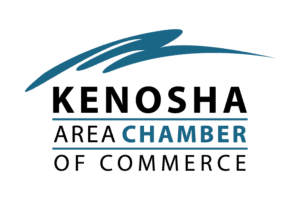Target Market Analysis & Market Barriers
You have a fantastic idea for a new product or service that is unlike anything currently available on the market today. Unfortunately, if you have not taken the time to perform a market analysis, then it is all for naught. It does not matter how good your idea is or how well-made your product is; without a thorough and complete market analysis, it is all guesswork, and that rarely works.
Often referred to as a market feasibility study, a market analysis is the all-important first step to defining the market’s overall health and barriers to entry. After all, no company wants to introduce a product or service to a market that is on the decline, or worse, one that is dominated by a select few competitors. Even if your price point is more competitive, there are still roadblocks that can only be eliminated after doing a market analysis. So, what are the critical components of a forward-thinking market analysis?.
1. Target Market Analysis: Current and Future Health of the Market
Just like every product has a lifecycle, so too does a given market. Understanding the current market’s health is critical to deciding how and when to introduce your product or service. It does not matter how large that market is or how many players there are. Your market analysis must define the 5, 10, 15, and even 20-year future of the market. Shorter periods will be easier to forecast, but it is still important to have a complete view of where the market is now, and where it is going. Here are some things to consider.
• Is the market currently growing and if not, why?
A growing market is a good sign. However, it is equally important to understand if the market has stagnated, or worse, started to decline. If it has stagnated or declined, then outline whether it is a temporary lull or one that may take some years to resolve. This might just give you some insight into how and when to introduce your solution.
• Who are the major competitors and what are their strengths and weaknesses?
Understanding the strengths and weaknesses of your future competitors is critical to understanding what their market share is and how to position your company’s unique value proposition. It is also an important part of deciding whom to target. This portion of the analysis could very well lead to you identifying a market niche, which is a portion of the market that is either being ignored or not properly serviced by existing competitors.
• Is there a competing technology or external force that could make the market obsolete?
A market can be perfectly healthy and on the rise and yet still pose some potential problems for new companies. This is especially the case if there is a competing technology or external force that could make the market/industry obsolete. History has shown that disruptive industries can instantaneously alter how consumers and businesses operate. Knowing this beforehand is critical. It is also a good future-thinking practice for any business; being aware of external threats helps you to be proactive instead of reactive.
2. Target Audience, Existing Demand, and Market Channels
It is not enough just to know who you are targeting. Defining your target audience is ultimately about outlining how many potential customers you could sell to and why they would purchase your solution. This requires an in-depth analysis of the market’s current customer makeup. This is when you double back and use your current market share analysis to outline what portion of the market needs your solution.
• Who are the customers most likely to purchase your product/service and why?
Make sure you provide a complete overview of who you are targeting and why they would purchase your product. If you are selling a “me-too” product, one with no distinguishing characteristics other than price and delivery, then outline how you will deliver that offering faster and cheaper than your competition. If you have a product that has a longer life compared to your competition’s offering, then define the benefits of that longer life in a way that speaks to your audience. Products that last longer mean customers save money, so make sure to use that to your advantage.
• What is the current need and demand for your product/service offering?
Again, it is not uncommon to discover a market niche where the demand and need for a given product or service is higher than the rest of the market. Understanding why that demand is higher is critical to hitting the ground running. It can be as simple as customers being too small for the market’s larger competitors. In many industries, small customers can be seen as drains on a larger company’s operations, so be sure to thoroughly define why your solution is needed.
• What is your channel to market?
Companies often rely upon market channels as a way to generate opportunities or sales. If you are providing a product, then you may decide to do direct sales and ship products to customers from your own facility. However, you may decide that using distributors, sales agents, or value-added resellers (VARS) is better for getting your product to market. Even companies that provide a service can benefit from using a market channel. Certain markets are known for only wanting to deal with specific sales agents due to their knowledge and expertise.
3. Market Barriers to Entry
For this portion, think about whether your company needs any accreditations, certifications, or licenses to sell your product or service. Several markets have certain criteria that must be met – or testing that must be done – before a particular product or service can be sold. These barriers can ultimately determine your overall product-to-market timeline, which is critical to properly managing product and service costs.
• Do you have a consistent source of supply?
If you are offering a new product, then it is essential to ensure that your sources for raw materials and consumables are reliable. There are plenty of industries that are disrupted by a sudden shortage of raw materials largely because the market’s major players have placed long-term supply agreements. This is why having multiple sources is so important. While it is fairly easy to manage shortages over the short term, long-term shortages that take months to resolve can wreak havoc on your operations.
• How will the market barriers impact your product-to-market or service-to-market timeline?
Every market has barriers to entry. They may be small and inconsequential, or they may be large and adversely affect when and how you can introduce your solution. Ultimately, you need to know what those barriers are. The last thing you want is to find out by happenstance that you have ignored barriers to entry that will not allow you to sell your solution for months down the line. In the worst cases, companies offering new solutions have been hit with fines and lawsuits for ignoring critical qualification criteria.
Daaxit is a financial consultancy partner with over 60 years of experience helping growing construction companies with all their finance, marketing and branding, and IT management needs. We are a customer-centric partner who understands the challenges that come from managing a growing business and we focus on providing invaluable insight that helps to improve our customer’s bottom line.









